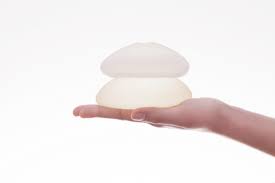Motivations For Plastic Surgery Are Deeply Personal
Top five plastic surgery myths
Many myths surround the seemingly glamorous world of plastic surgery. But in fact, plastic surgery is a lot like every other medical specialty with highly-trained physicians providing everything from reconstructive hand surgery to burn scar revisions. Here are my top five plastic surgery myths.
#5 Plastic Surgery is All About Beauty and Vanity
Although breast augmentations, Botox and facelifts get all the press, plastic surgery encompasses everything from correcting birth defects such as cleft palates to post-cancer breast reconstruction and work-related hand injuries.
Plastic surgeons care about the functional and overall results after surgery, not just the aesthetics (although we are specifically trained to optimize those, as well). When a patient does choose to have surgery for cosmetic reasons, it is often to correct areas which are not amenable to diet, weight loss or nonsurgical procedures.
#4 Plastic Surgery Patients are the Rich and Famous
If plastic surgeons only operated on the 1%, we wouldn’t have a thriving plastic surgery industry.
Most aesthetic patients are not the rich and famous, but are average people who simply wish to restore confidence, enhance their overall appearance and improve their lives.
#3 Only Women Get Plastic Surgery
Although women have been the traditional customers of plastic surgery, men are turning to plastic surgery in increasing numbers.
Less invasive procedures such as Botox, laser treatments and dermal fillers can give men a rejuvenated and naturally youthful appearance without any downtime and at relatively low costs. These, along with liposuction, are the most popular cosmetic surgery treatments for men, with many men reporting a need for a competitive edge in the workforce as the reason they have pursued cosmetic treatments.
#2 Plastic Surgery Leaves No Scars and Lasts Forever
Plastic surgeons are great at making scars look better, more refined and smaller, but all types of plastic surgery will generally cause some type of scar formation. We can often recommend the best way to minimize scarring, and give advice and treatments on how to make your scar look as great as possible after surgery.
And while many plastic surgery procedures are long lasting and can give you years, if not decades of personal satisfaction, many factors determine how long the results will last. Plastic surgery can turn back the hands of time – but the clock keeps on ticking. Great skin care, less-invasive office procedures, surgical touch-ups, and your overall health are all important to maintain your natural good looks.
#1 Plastic Surgery is the Same as Cosmetic Surgery
All plastic surgeons do not have the same training. Many doctors trained in, and board certified in, other specialties such as gynecology or family medicine have ventured into plastic surgery, causing what is known as “white coat confusion”. Yes, they are board certified – but not in plastic surgery.

Most Common Types of Cosmetic Plastic Surgery
Cosmetic plastic surgery may also be used for medical purposes, such as for people who have had accidents, to restore the function of a body part, or to repair scars from surgery.
There are many procedures available, so here is a look at the eight most common types of cosmetic plastic surgery:
1. Breast Augmentation
Breast augmentation refers to procedures which increase the size or change the shape of the breasts. When the size of the breast is increased, the procedure may also be called ‘breast implant surgery’. Breast augmentation is not the same as breast lifts or breast reduction, which are actually different types of procedures.
2. Dermabrasion
Dermabrasion uses a specialized tool that gently ‘sands’ down the top layer of skin. Once the top layer of skin has been removed, the area heals and new skin replaces the old. The end result is smoother-looking skin.
Dermabrasion is usually used for:
- Acne scars
- Age spots
- Crow’s feet
- Growths or lesions on the skin
- Sun-damaged skin
- Wrinkles
3. Facelift
Facelifts repair sagging, loose, drooping, or wrinkled skin on the face. During this procedure, facial tissues are lifted, excess skin removed, and skin replaced over repositioned contours. Neck lifts are commonly done in conjunction with facelifts.
Other procedures commonly done along with facelifts include nose reshaping, forehead lifts, or eyelid surgery.
4. Hair transplantation
Hair transplantation surgery, also known as hair restoration, is performed to improve the appearance of baldness. In this procedure, hair is moved from an area of thick growth to a bald area.
In a single session, more than a thousand hairs may be moved. Some people may require more than one session. The hairs which are moved are permanent, which means that no long-term care is necessary. Most hair transplants result in successful hair growth after the procedure.

Preparing for Surgery
The type of preparation that will be necessary prior to your surgery will depend on what surgery will be performed and the type of anesthesia that will be administered.
Reconstructive plastic surgery may require multiple procedures done in several stages.
The following are considerations for you to discuss with your physician/surgeon prior to your procedure:
- Ask the surgeon to explain the benefits, risks, and expectations of the procedure.
- Discuss what type of anesthesia will be administered and what recovery time is expected.
- Inform your physician of any medications (over-the-counter or prescription) you are currently taking, as well as any prior procedures, history of chronic illnesses, and/or allergies you may have.
- Be sure to stop drinking and eating for the recommended time period before and/or after surgery.
- Be sure to follow any specific pre-operative bathing, shaving, or cleaning instructions.
- Be sure to discuss any post-operative instructions that need to be followed (i.e., changing dressings, post-op medications, follow-up appointments).
- Do not wear makeup the day of surgery, including nail polish.
- Do not wear eye contacts the day of surgery.

Unhappy patients keep plastic surgeons up at night
With so many wonderful patients singing our praises, we should be walking on cloud nine. But the reality is, the small few that are not happy (and may never be) weighs on us far more than all the positive outcomes combined.
During a consultation, we sometimes come across patients who we feel cannot be satisfied and we do our best to identify this group, choosing not to take them as a patient in the first place (and saving ourselves a headache).
But it’s not a reliable system and people slip through the cracks. Despite all our efforts before surgery to make sure a patient’s expectations are realistic and doing what we can to achieve their desired results, we can’t make everyone happy all the time.
Some surgeons aren’t affected by it and seem just to brush it off; others are outright mean and divert the blame on the patient. That’s not how things are handled in my or my partners’ practices. We take it to heart, probably too much, and it can be crushing.
How Much Plastic Surgery Really Hurts
No pain, no gain? Nah. New cosmetic surgery techniques are making going under the knife less uncomfortable. Here, doctors rate the ouch-factor of five popular cosmetic procedures.
Breast Augmentation
Pain Rating: 3 to 5/10
Unlike a breast lift, breast implants are inserted into the body either over or under the chest muscle. Dr. Buford, and many other cosmetic surgeons, tend to place them underneath the muscle for a more natural look—and this technique hurts more. The main discomfort that patients feel is related to stretching of the pectoralis major muscle and the resulting spasm. To reduce pain from the procedure, I perform an Intercostal Nerve Block (an injection) right before the patient wakes up from surgery, which lasts six to eight hours. Once this wears off, the pain fibers are reset and most patients report being able to discontinue prescription pain medication as early as 24 to 48 hours after surgery. And while you’ll probably feel well enough to go back to work after a few days, some mild soreness may linger for a few weeks as your body adjusts to the new implants.
Liposuction
Pain Rating: 3 to 6/10
Like any surgery, liposuction can hurt because it involves tissue injury. But that being said, liposuction is not really a painful procedure. However, having lipo on multiple body parts at one time will leave you more sore than having surgery on just one area (which is why the pain rating here could potentially reach a six).
Eyelid Surgery
Pain rating: 1 to 2/10
Since a blepharoplasty involves tightening up the muscles and skin above the eyes, it will leave you with some swelling and bruising for about a week. But patients are always surprised at how little pain they feel. If you go for a lower lid surgery too, that can increase the pain rating up to a three or four. Often those involve fat grafting to fill in lost volume under the eyes, according to Dr. Bloom. In other words, the doctor will suck fat out of your stomach or thigh and place about a teaspoon of that fat under each eye.